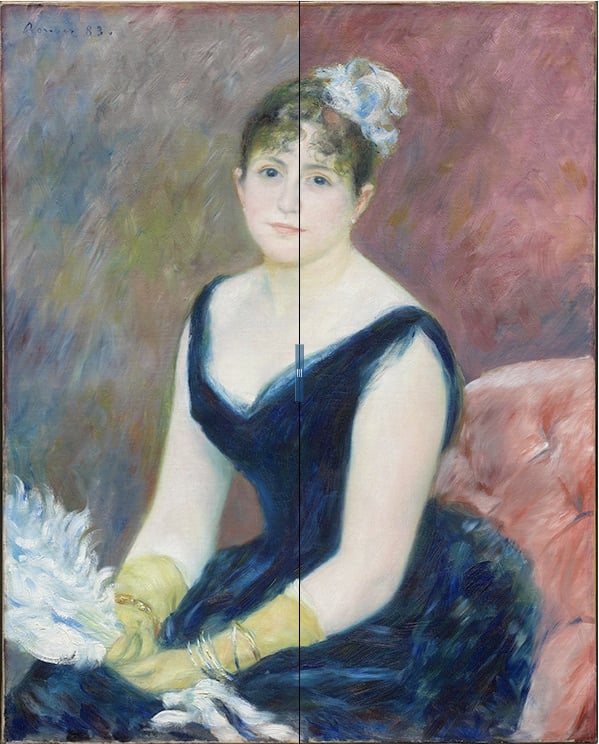Art & Exhibitions
Art Institute of Chicago’s Scientific Techniques Reveal Renoir’s True Colors



Pierre-Auguste Renoir, Madame Léon Clapisson (1883). The left side shows the painting’s current colors;
the right side shows a digital restoration of the original.
Photo: Courtesy of the Art Institute of Chicago, Mr. and Mrs. Martin A. Ryerson Collection.
Conservators at the Art Institute of Chicago are using new scientific technology to rediscover the original appearance of a painting by the French Impressionist Pierre-Auguste Renoir, reports the New York Times.
Fifteen years ago, the museum realized that the edges of an 1883 canvas by the artist, Madame Léon Clapisson, long protected from light by the picture’s frame, were considerably darker and more vibrant than the rest of the portrait. Thanks to new developments in technology, a series of tests have allowed curators to learn more about how the work would have looked at the time of its creation.
While one might wonder if a botched restoration might be to blame, closer examination using a microscope reveals faded pigment molecules in the faded areas. “It’s very clear it’s original paint,” conservator Kelly Keegan told the New York Times. “You can see there are particles on the surface that are sort of translucent now.”
The museum has also used surface-enhanced Raman spectroscopy, a new laser technique, to identify organic pigments in the paint. Scientists soon realized that Renoir had employed a color called carmine lake, which takes it vibrant red hue from ground cochineal insects, but unfortunately fades with exposure to light. Today, it is more often used as a food coloring, to the dismay of vegetarians.

Conservators and scientists at the Art Institute of Chicago examining the pigment particles and individual
brushstrokes of Renoir’s Madame Léon Clapisson (1883) with a high-power microscope and X-rays.
Although the painting won’t be restored to its original appearance, Keegan has created a digital rendering of what it probably looked like, and the rendering will be included in the digital catalogue of the Institute’s Renoir paintings currently being compiled. Originally the portrait’s backdrop, now in muted tones of blue, gray, and green, would have been a more vivid reddish purple.
Of the findings senior curator Gloria Groom told the Times, “It’s so weird.” Groom described the original color as “in some ways, more daring, more adventurous,” and she marveled at science’s ability to alter one’s understanding of an artist’s oeuvre.
An exhibit titled “Renoir’s True Colors: Science Solves a Mystery” will display the painting and the new digital version side-by-side at the museum though Sunday, April 27.